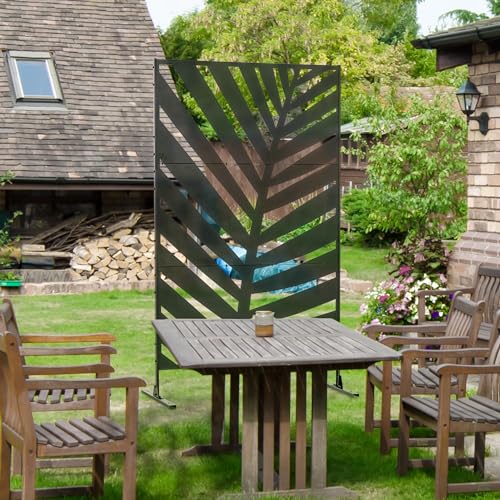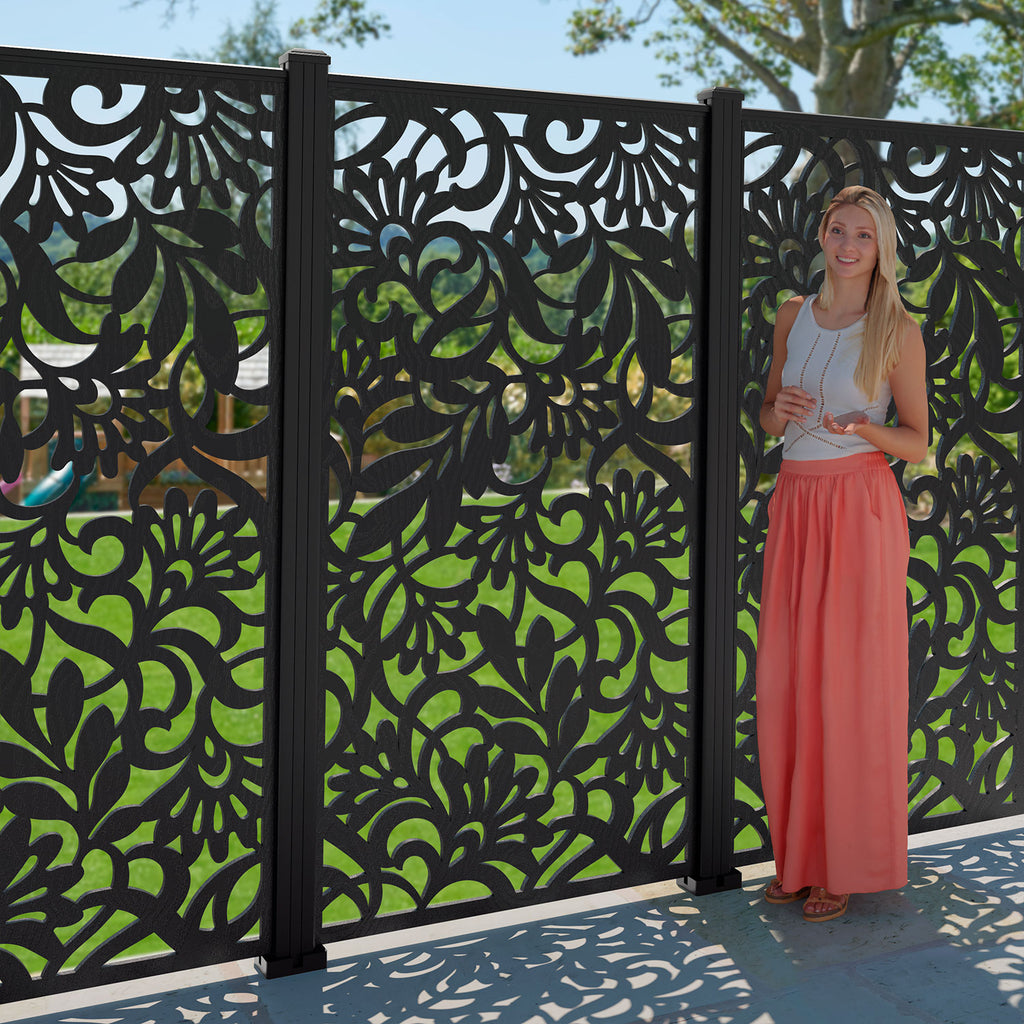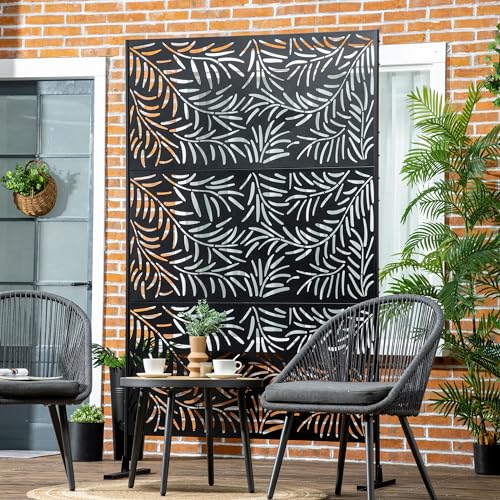21 garden screening ideas for privacy and style – with design tips from garden experts
Here are our favourite garden screening ideas, from modern panelling to strategic planting styles


The best garden screening ideas combine privacy with style, shielding outdoor living areas from neighbours' prying eyes while sprucing up the space.
There are so many creative ways to screen a garden, from modern panelling to natural hedging. Whether you're looking for small garden screening ideas or garden landscaping ideas to zone a larger space, there are countless ways to section off your garden beyond a traditional wooden fence.
To give you a little inspiration, we've rounded up some of our favourite garden screening ideas with design tips from the experts.
Garden screening ideas
Garden screening is the way forward if you're hoping to zone or add privacy to your garden.
'Including hard landscaping elements in your outdoor space like metal garden screening, fencing and trellis can ultimately improve and enhance the aesthetics, functionality and value of your garden,’ says Martine Le Gassick, creative director at Stark & Greensmith.
Here are the garden screening ideas we love most.
1. Modern screening
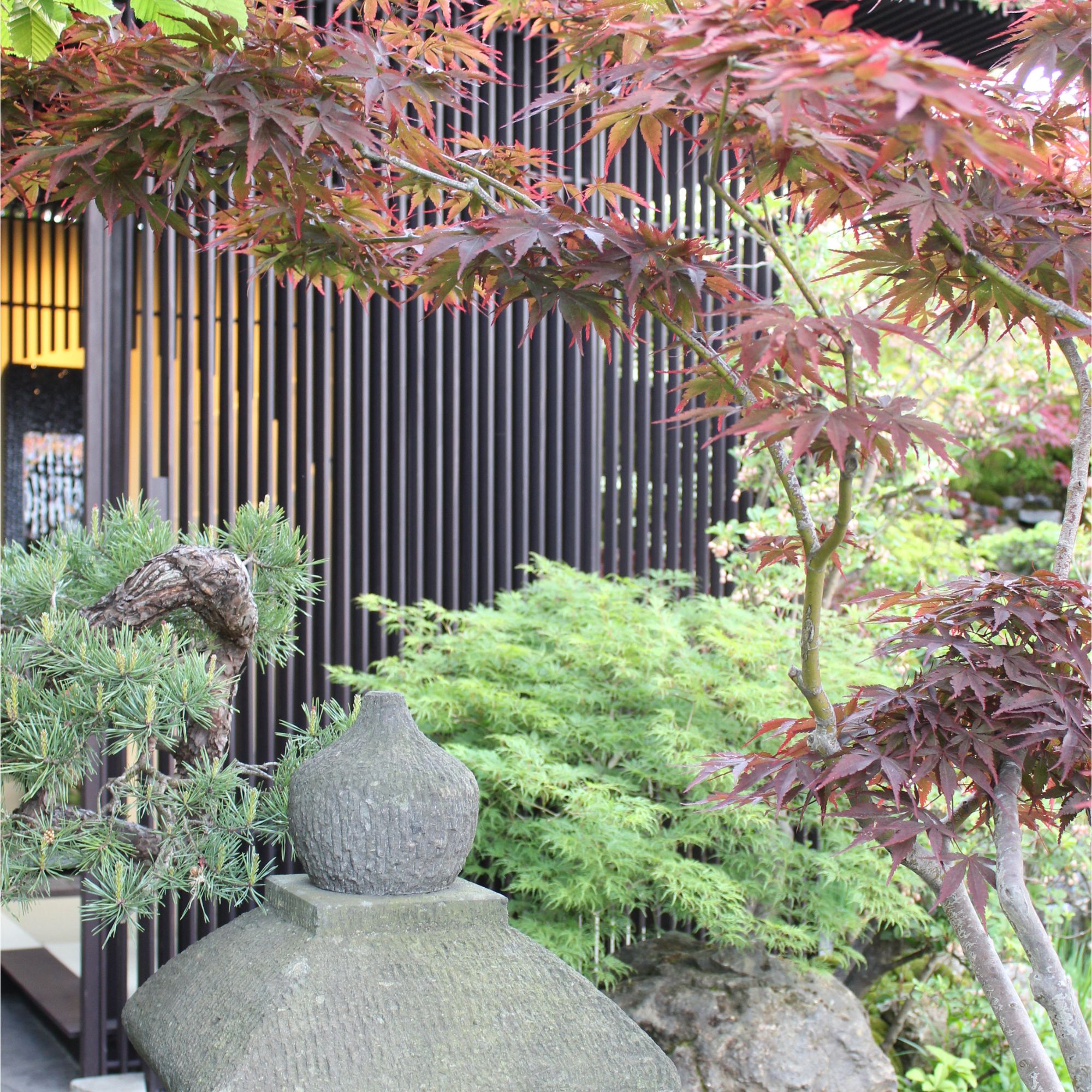
There's a huge range of attractive screen panels on the market, whether you're going for a sleek, modern look with heavier materials or an ornate patterned screen. They're a great choice if you're looking for front garden privacy ideas, too.
Sign up to our newsletter for style inspiration, real homes, project and garden advice and shopping know-how
'There are plenty of modern garden screen options available, and many are designed to be both functional and decorative,' says Gary Jarman, landscaping expert at Building Shop.
Metal screens are a popular option. 'These often feature a laser-cut decorative pattern and are available in different colours, but you need to ensure that the metal used is rust-resistant so the rain doesn't affect it,' Gary explains. You could even try a slatted panel like the one above for added interest.
Glass screens offer another modern look, but you'll need to make sure they're frosted or glazed if you're looking for garden screening ideas that provide privacy.
'Most often, these are frosted or patterned in order to block the view but let light through,' Gary says. 'They're naturally strong and weather-resistant, too.'
Where to buy garden screening panels:
2. Try screen planters

If you haven't got a wall or fence to anchor your garden screen, a screen planter like the Outsunny Wood Planter with Trellis from Amazon is a great choice. It's the perfect opportunity to erect a freestanding screen in your garden while providing extra space for planting.
'Screen planters are nothing new, but they are seriously underutilised in gardens that could benefit from increased privacy,' says Chris Cooper, senior product manager at battery lawnmower specialists Hayter.
'A screen planter is ideal for artificially adding height to a specific area of a garden wall without extending the whole wall or fence to an unappealing height. You can plant anything in a screen planter – they're a really versatile way of adding privacy. You can even build your own if you’re feeling up to a challenge!'
3. Go natural with a hedge
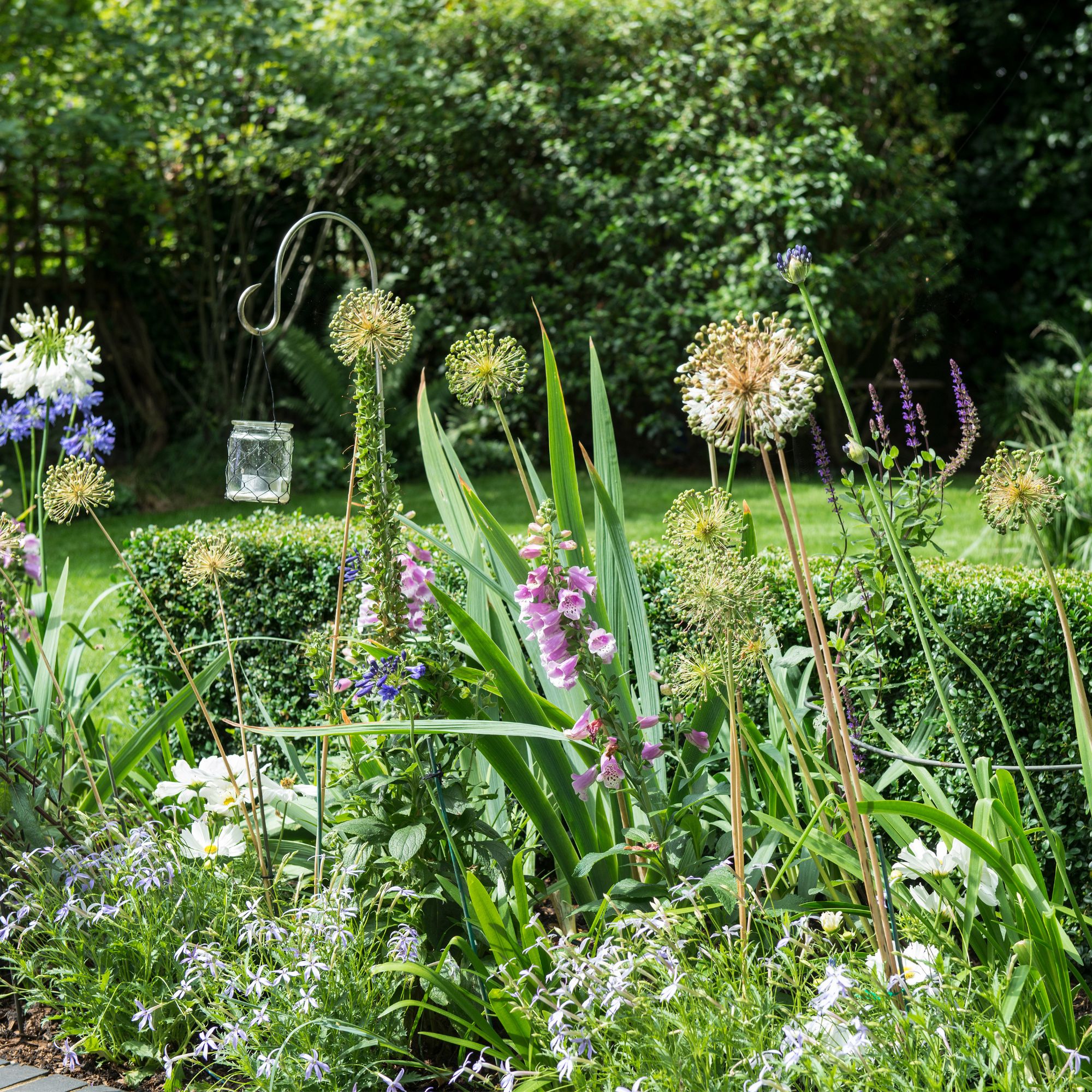
Garden screening ideas aren't limited to man-made pieces – in fact, planting natural hedging is a great way to zone a garden while providing a spot for wildlife. Hedges and shrubs can help with noise reduction, too, so they're a great option if you live by a busy road.
'Fast-growing hedges such as cherry laurel, privet, leylandii and bamboo are the perfect alternative to man-made fences,' says Chris.
'Leylandii is especially quick, growing up to 90cm a year and requiring little to no maintenance.'
Most hedges are relatively low maintenance – you'll just need to learn how to prune hedges once a year to keep them in shape.
4. Grow climbing plants along a trellis
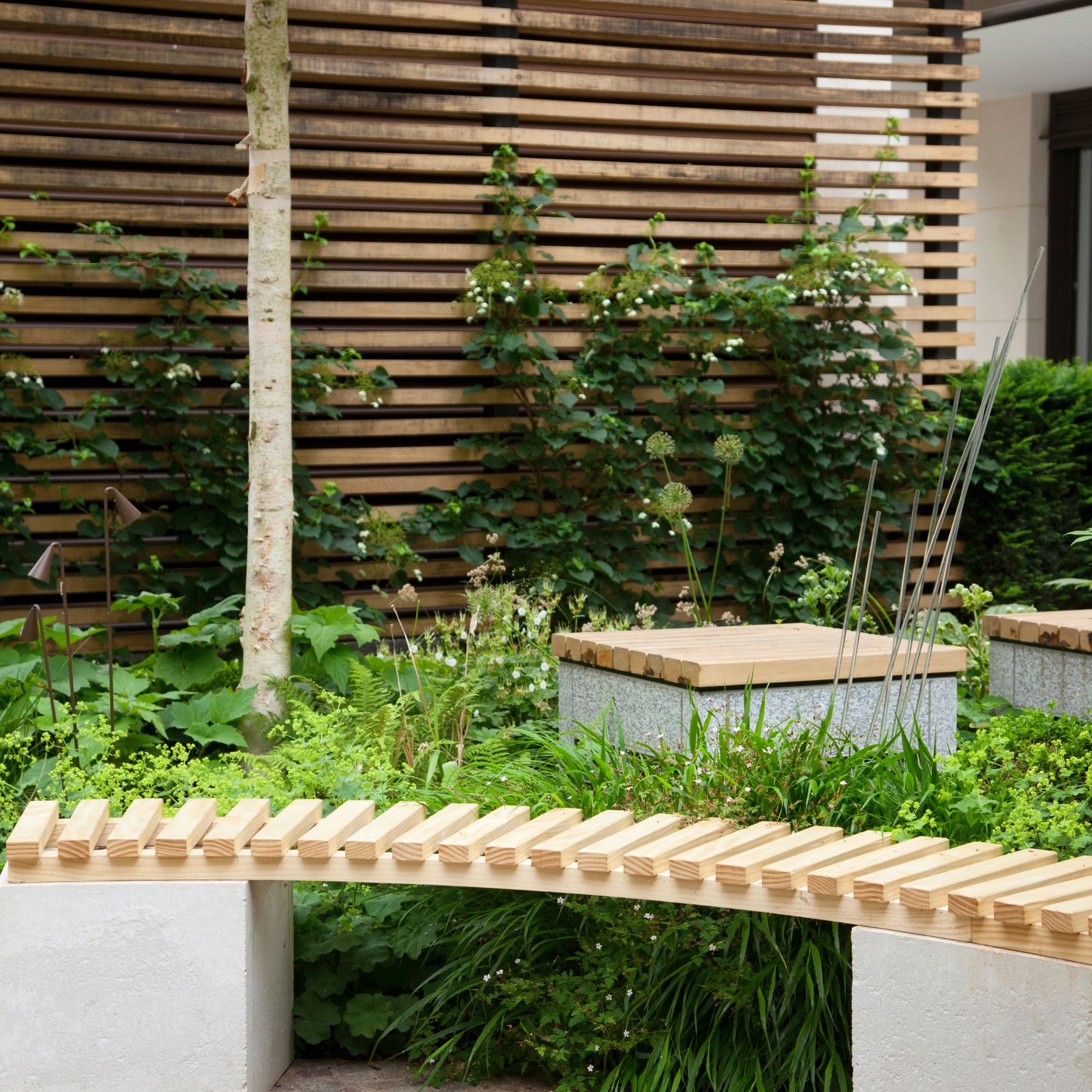
We're a big fan of garden trellis ideas at Ideal Home, and the structures make fantastic garden screening ideas. Training a few fast-growing climbing plants for privacy is a brilliant way to fill in the gaps and naturally decorate a trellis.
Sweet peas are a great option, providing a beautiful fragrance while you're spending time outside. Just watch out for the fast-growing screening plants that you should avoid.
5. Layer plants
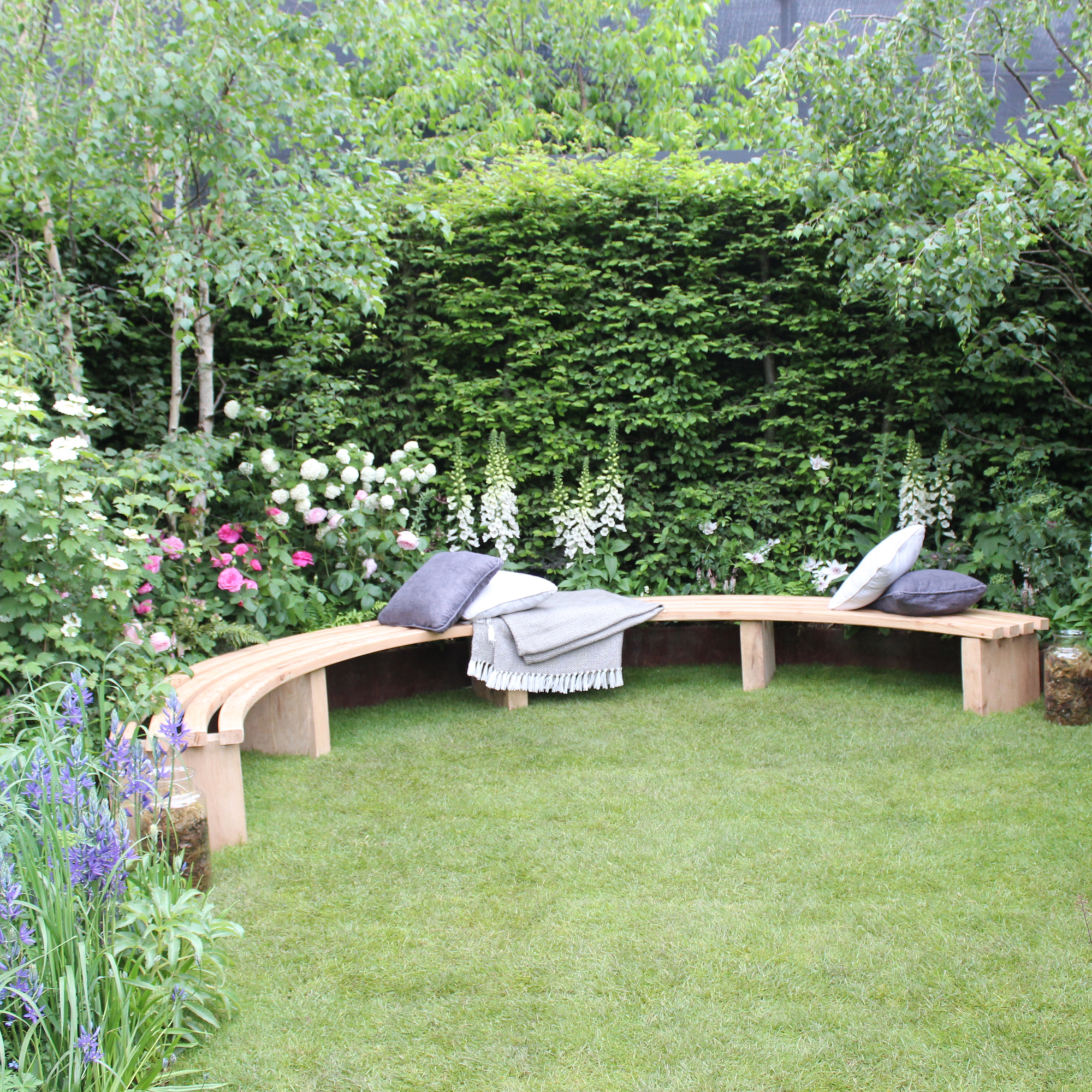
If you'd prefer something a little less uniform than hedging to zone your space, layering taller plants behind shorter shrubs is a fantastic way to build a natural screen.
'Layer planting is aesthetically appealing and especially useful for unconventionally shaped, small to medium-sized gardens,' says Chris from Hayter.
Chris recommends saving tall plants and evergreen trees for the top layer, medium-sized plants like hydrangeas and Viburnum tinus for the middle, and low-growing perennials like lavender, hostas and sedum for the bottom.
'If you follow this structure, you can create a diverse garden which, as far as your neighbours are concerned, you can literally get lost in,' Chris says.
6. Screen with garden furniture
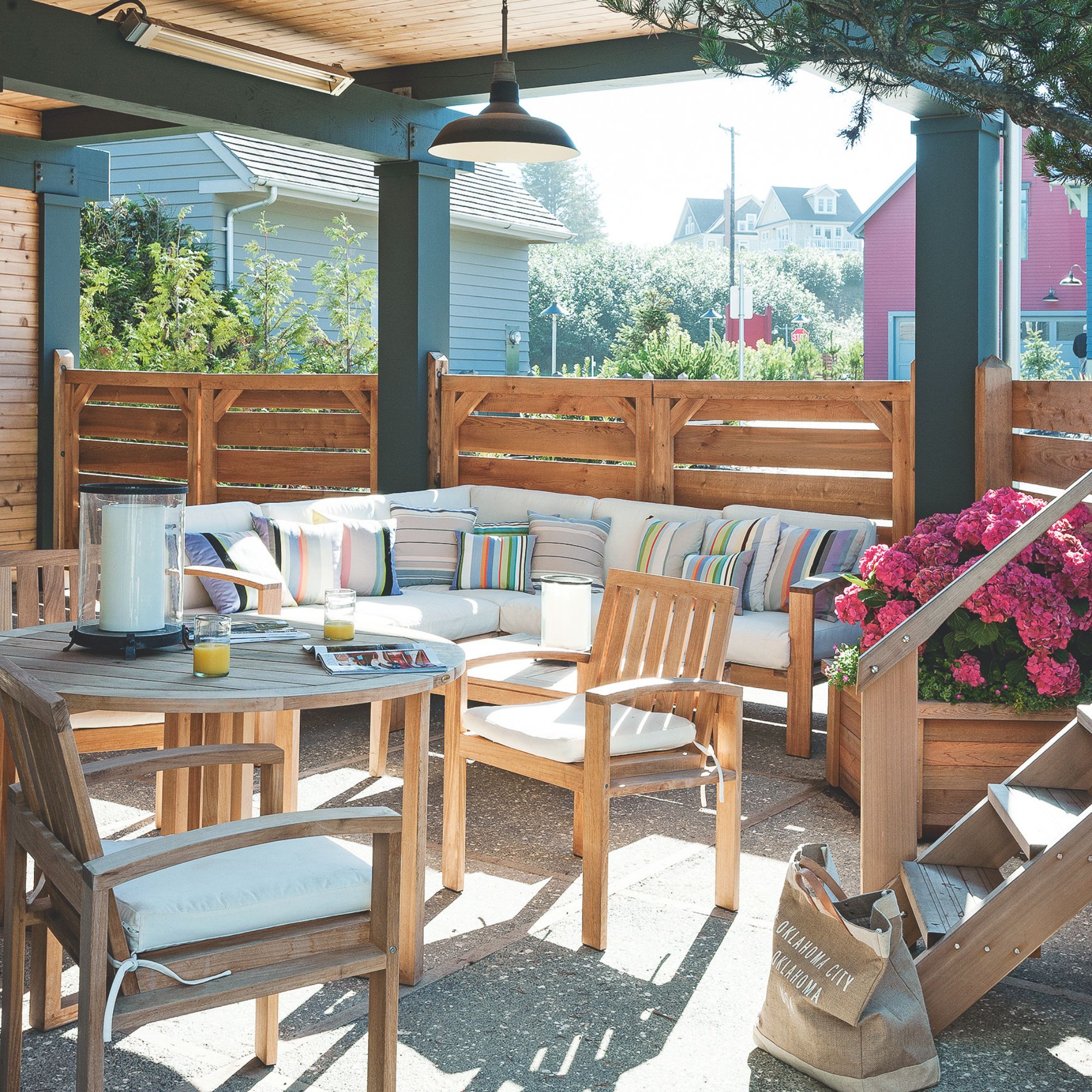
Even garden furniture ideas can be tailored to screen your space. Cleverly arranging outdoor seating is a great way to zone areas of your garden, for example.
'Opt for seating options with high backs,' says Lee Trethewey, furniture expert at Sustainable Furniture. 'Garden seating with high backs can easily be placed strategically to shield certain areas.'
You could even line garden furniture along fence panel screens, as shown above, to really define the space.
7. Go above and beyond a wall
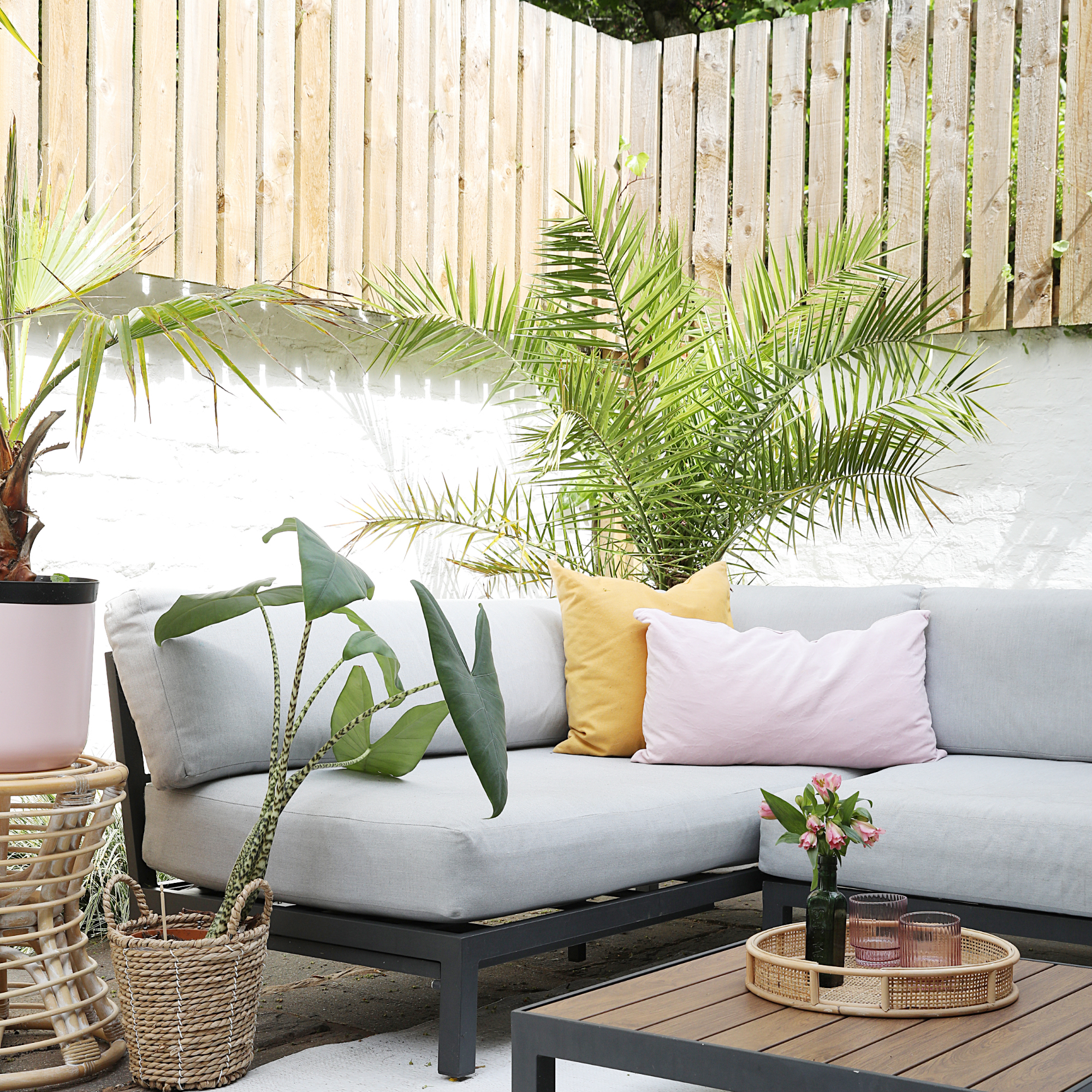
To create a cosy corner in your garden that’s protected from the elements and neighbours, pop up a wooden fence above the garden wall to provide extra height.
However, do check that you won't be blocking the light from your neighbour's garden.
Use plants to soften the look. It's a great opportunity to use a trellis covered in flowering climbing plants, for example.
Alternatively, paint it the same colour as the walls for cohesion.
8. Add in a water feature

If you’re looking to create a truly relaxing environment, a calming fountain or other water feature ideas are great options.
Not only do they create a visual barrier and work as a real feature in your garden, but there are sensory benefits, too. 'The sound of running water can help to block out noise and create a sense of privacy and seclusion,’ says Georgina Read, Paving Superstore’s garden and landscaping specialist.
You can either add a fountain to an existing wall or fence or buy a panel with a water feature built into it.
9. Hide behind a wooden slatted fence
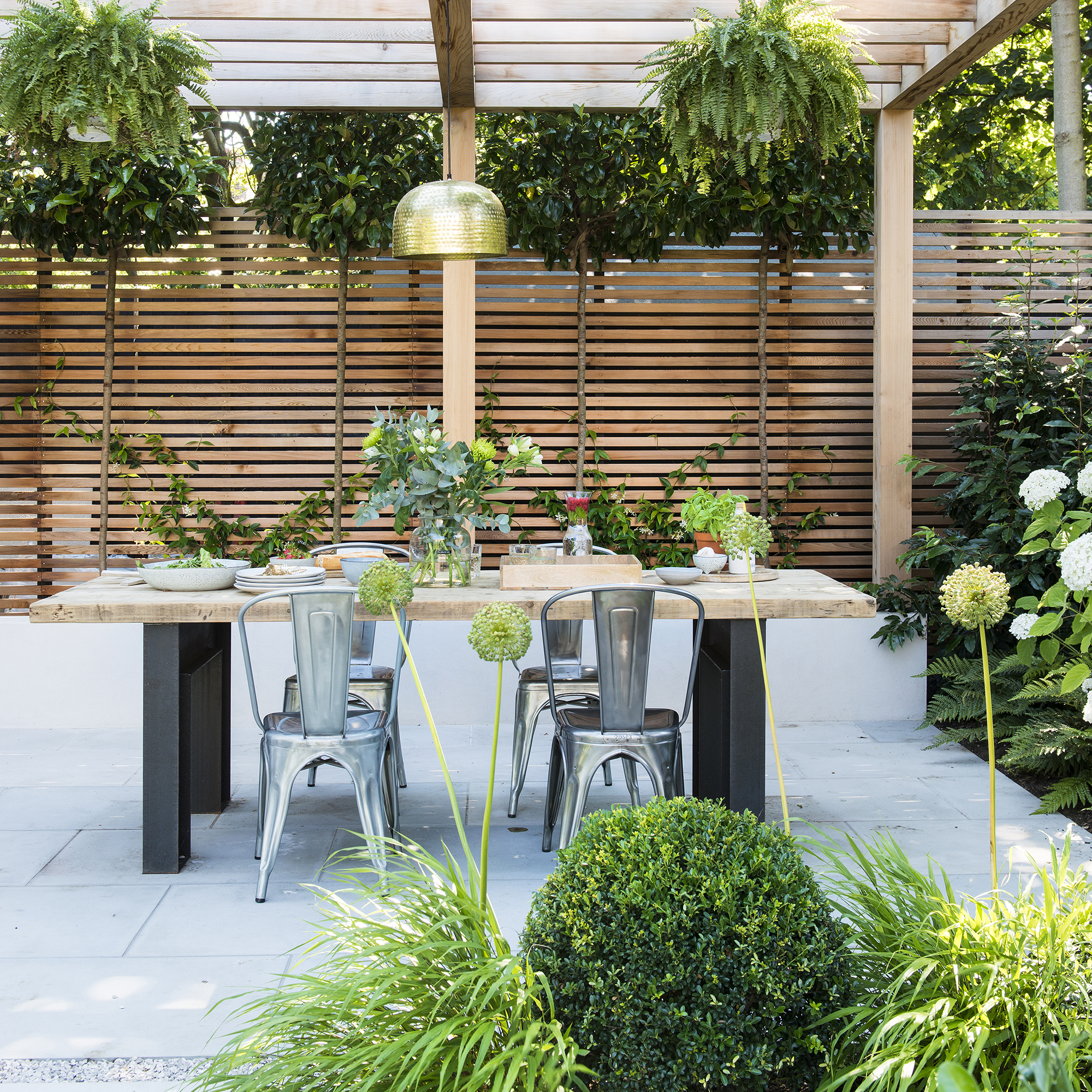
Garden screens can cover a multitude of sins – the compost area, the open-fronted mower store, bikes that no one rides anymore or a part of the garden you want to keep separate.
A simple wooden slatted fence that allows light through is ideal for this. It's an especially great idea if your garden is overlooked by trees and you want to block as little light as possible.
10. Install a retractable awning
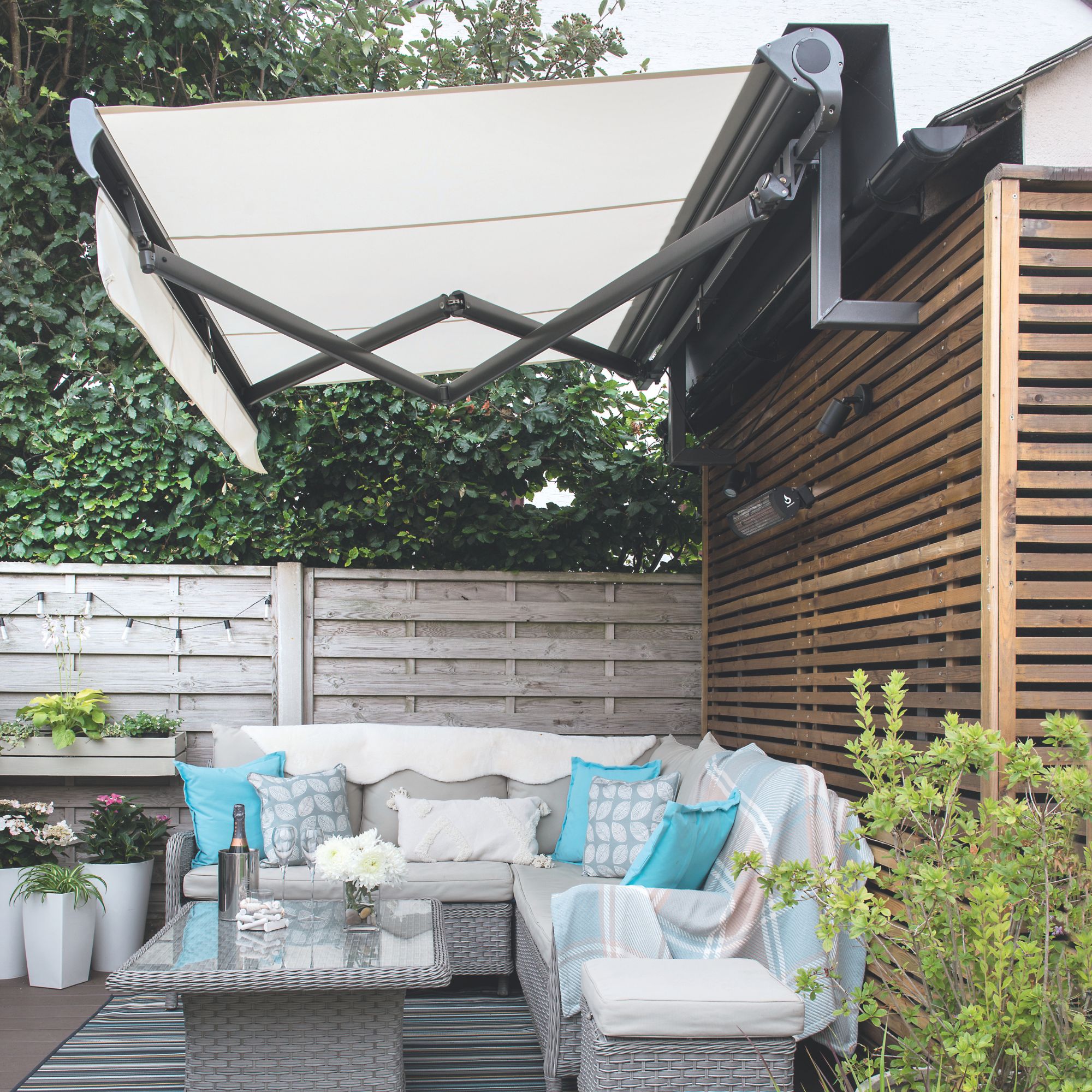
Living in the UK means that we can’t always enjoy our gardens as much as we might like to, especially in extreme weather conditions.
You’ll probably not want to dine al fresco in the middle of a rainshower, and sometimes, intense sun or heat can make it a little bit uncomfortable to enjoy time outside. This is when a retractable awning can come in handy.
Not only will it provide shade and shelter when you need it, but it also stops certain areas of your patio or outdoor space from being overlooked. Another big bonus is that it can be tucked away in the winter if you are not using the garden.
11. Consider a moveable screen
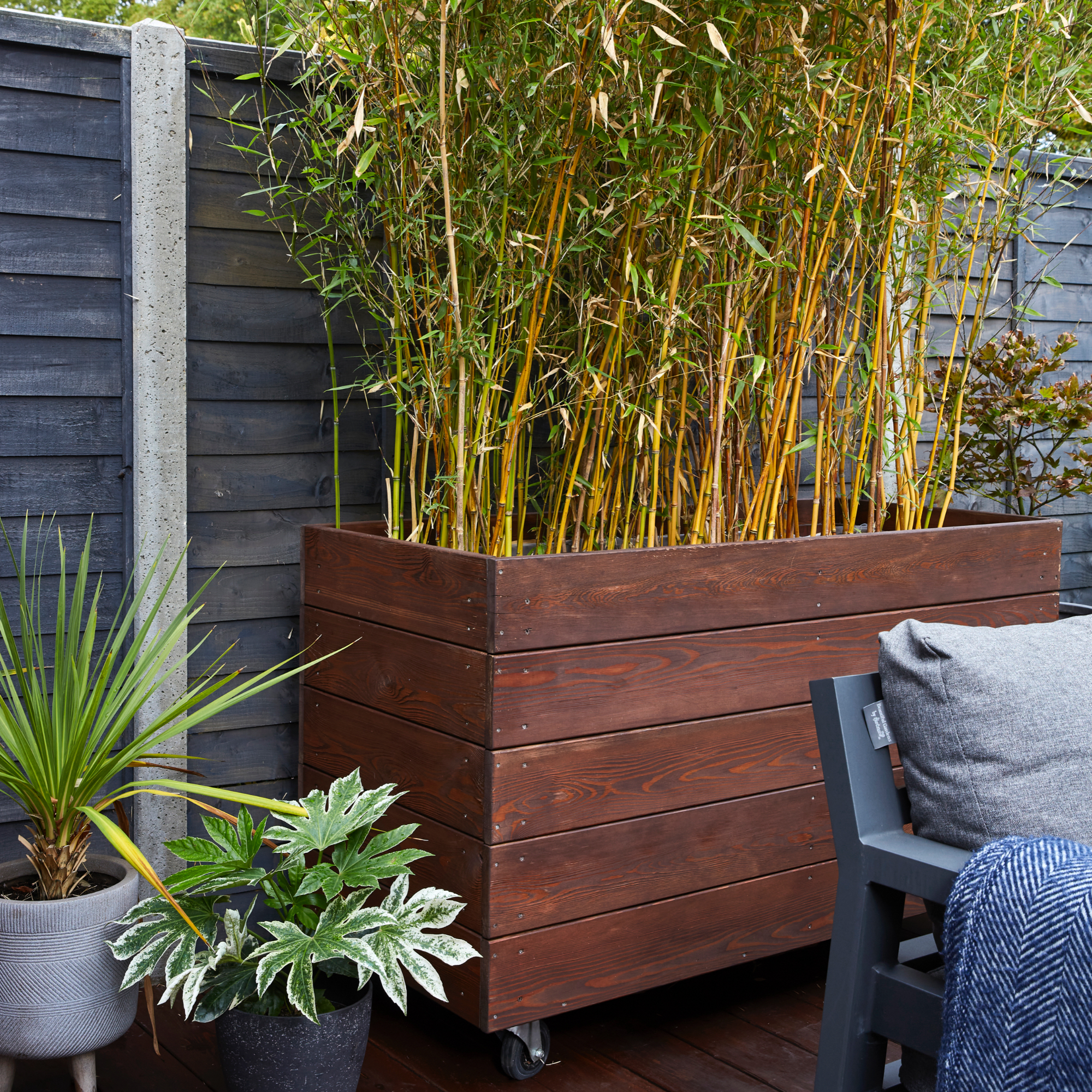
There are plenty of benefits to a movable garden screen – it can shield you from the neighbours, allowing you to sunbathe in private, and you can move it to create shade when you want a cooler but relaxing environment.
A brilliant twist on a movable screen is to use bamboo in a planter on castor wheels. Bamboo is one of the fastest-growing plants and offers a dense screen of foliage. The planter will be heavy, so beware that this will work better on decking or another hard surface.
12. Plant up a living wall
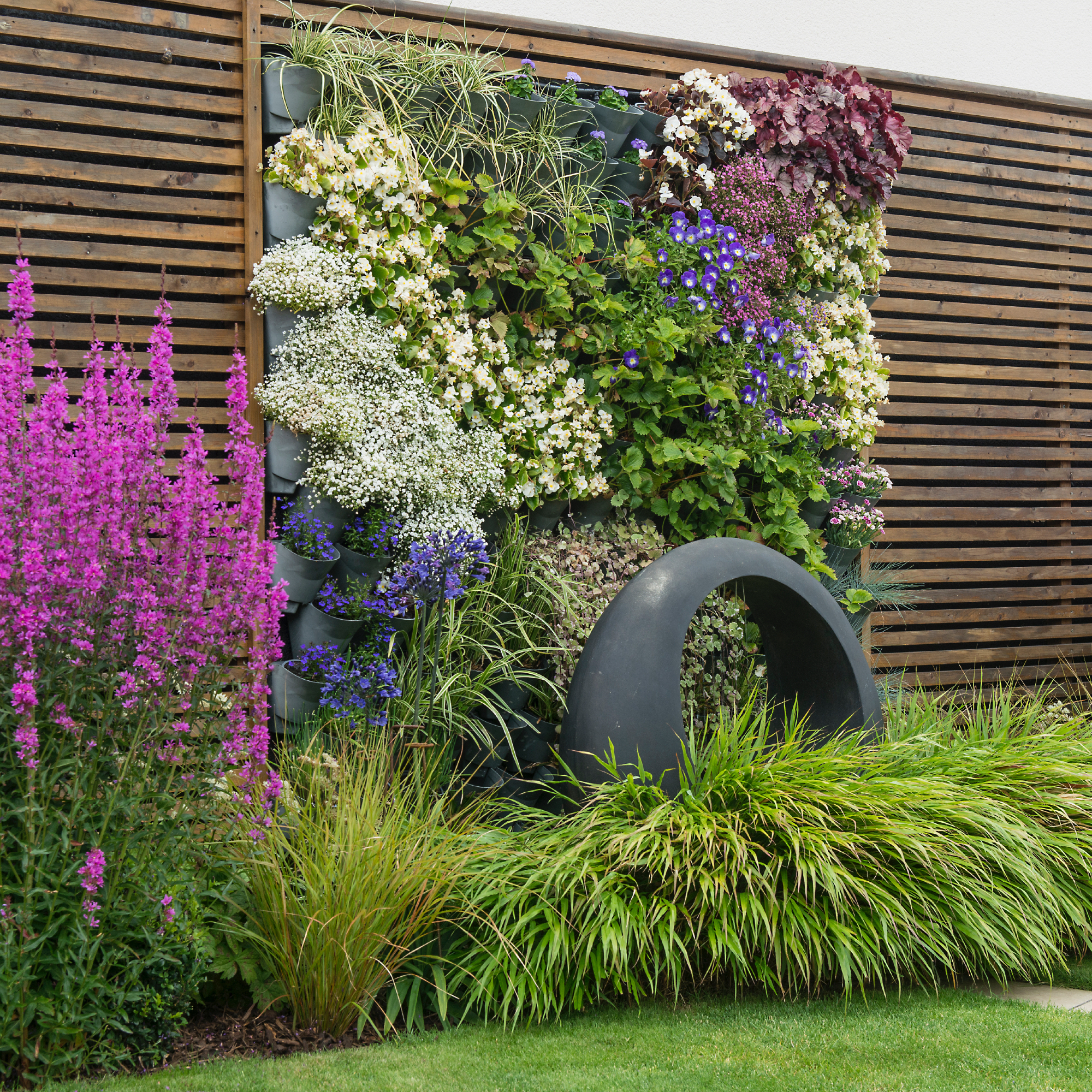
If you're looking for more natural garden screening ideas, a living wall is a great way to go.
Choose a section of your wall or screen and attach plant pots to it. Some wall-hanging designs will come with hooks, or you can attach them with cable ties instead.
Plant up an array of plants, with a mixture of foliage-based and floral varieties. The best trailing plants for outdoors are brilliant for covering the space. You could also consider herbs, especially if your screen is next to an outdoor kitchen area.
Plant tall varieties next to it for a splash of colour – hollyhocks, snapdragons or foxgloves will give you extra height.
13. Use rockery
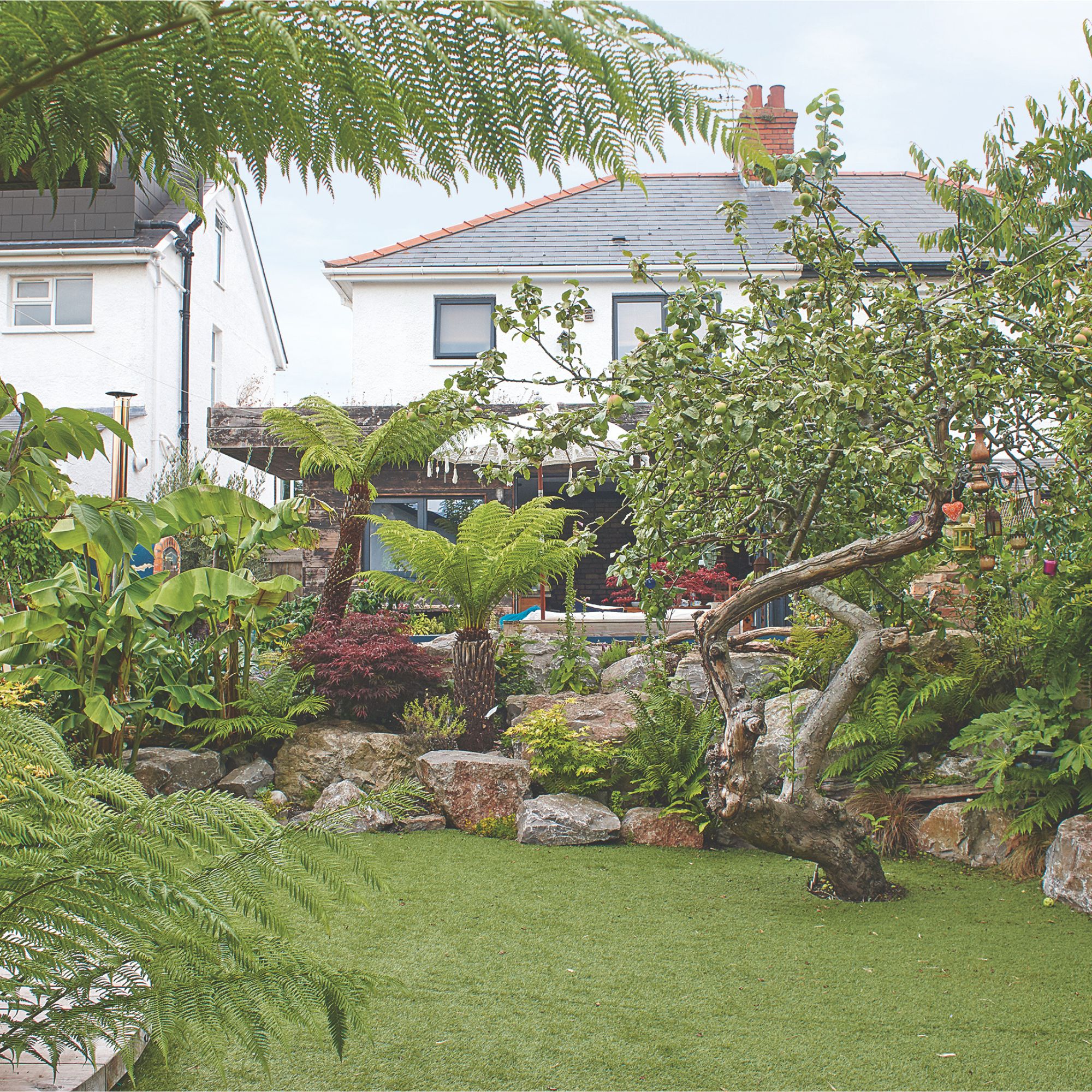
If you happen to have a surrounding or retaining wall in your garden, have you considered using gabion cages?
If you aren’t already familiar with them, gabion cages, or baskets, are empty metal cages which can be filled with everything from decorative stones and rocks to chopped wood and even empty glass bottles. Because of this, you can create an interesting and uniquely textured wall depending on your own style or tastes.
You are in control of what you fill your cages with and how high you stack them.
‘Stack more than one high to generate extra height,' says Georgina from Paving Superstore. 'Or, at single height, position slatted timber panels on the top to create extra seating within the garden.'
14. Go faux for instant results
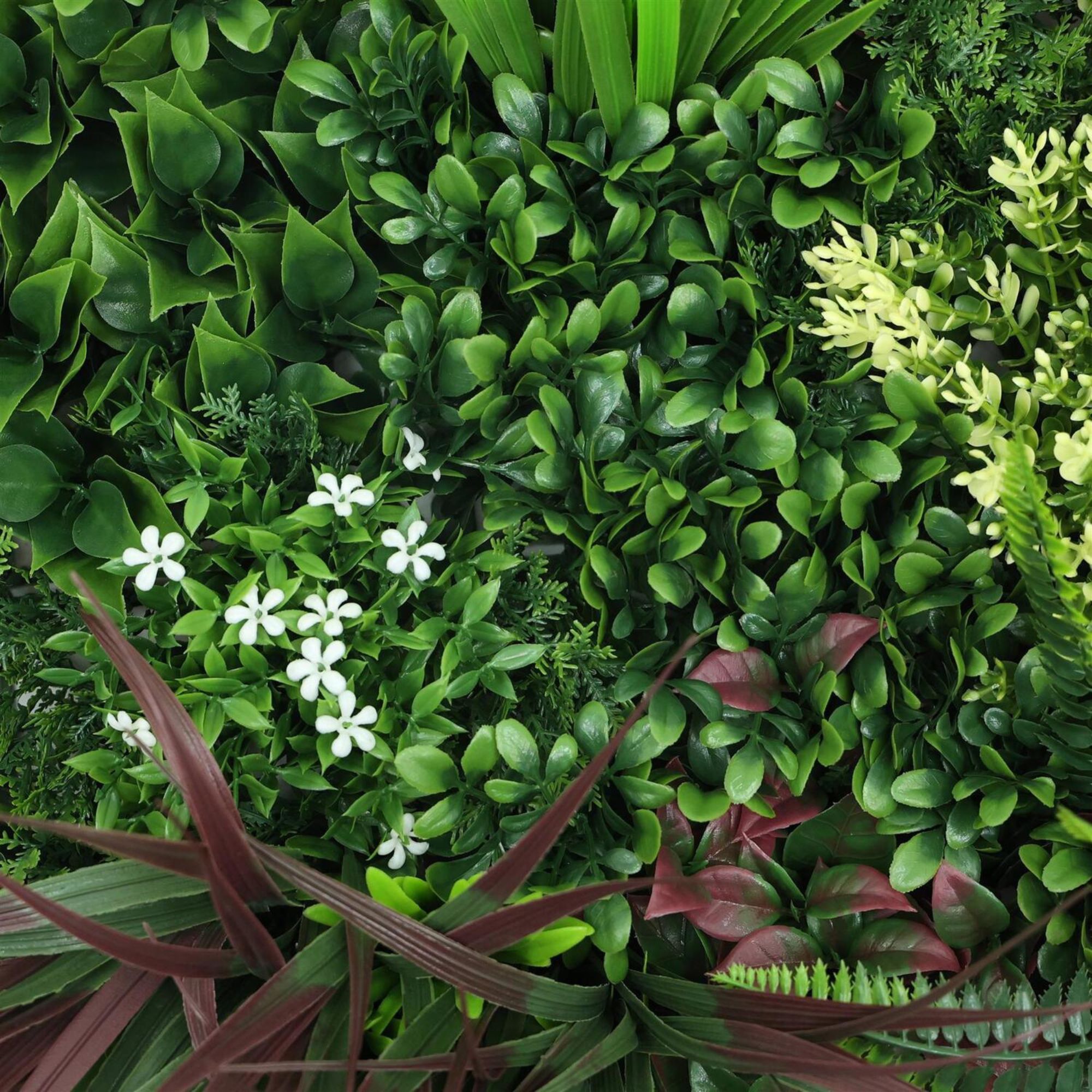
Ivy is a fast-growing climber, but even the fastest-growing varieties will take a few months to form a screen that’s dense and lush. Faux foliage, on the other hand, will provide instant – and impressive – results.
The market is awash with artificial foliage panels like the Premium Artificial Green Plant Living Wall Panel from The Range (shown above) that can be erected quickly and turn a simple fence into a style statement with minimal effort. There are all sorts to choose from, from classic green and autumnal red to ones peppered with faux flowers or fairy lights.
Panels with an abundance of foliage that look convincingly real will make your wallet wince more than flimsier versions, but they are worth the extra expense if your budget allows. If it doesn’t, but you need extra coverage, grow real ivy, clematis or jasmine to intertwine with the faux foliage.
15. Turn a simple fence into a mini storage place
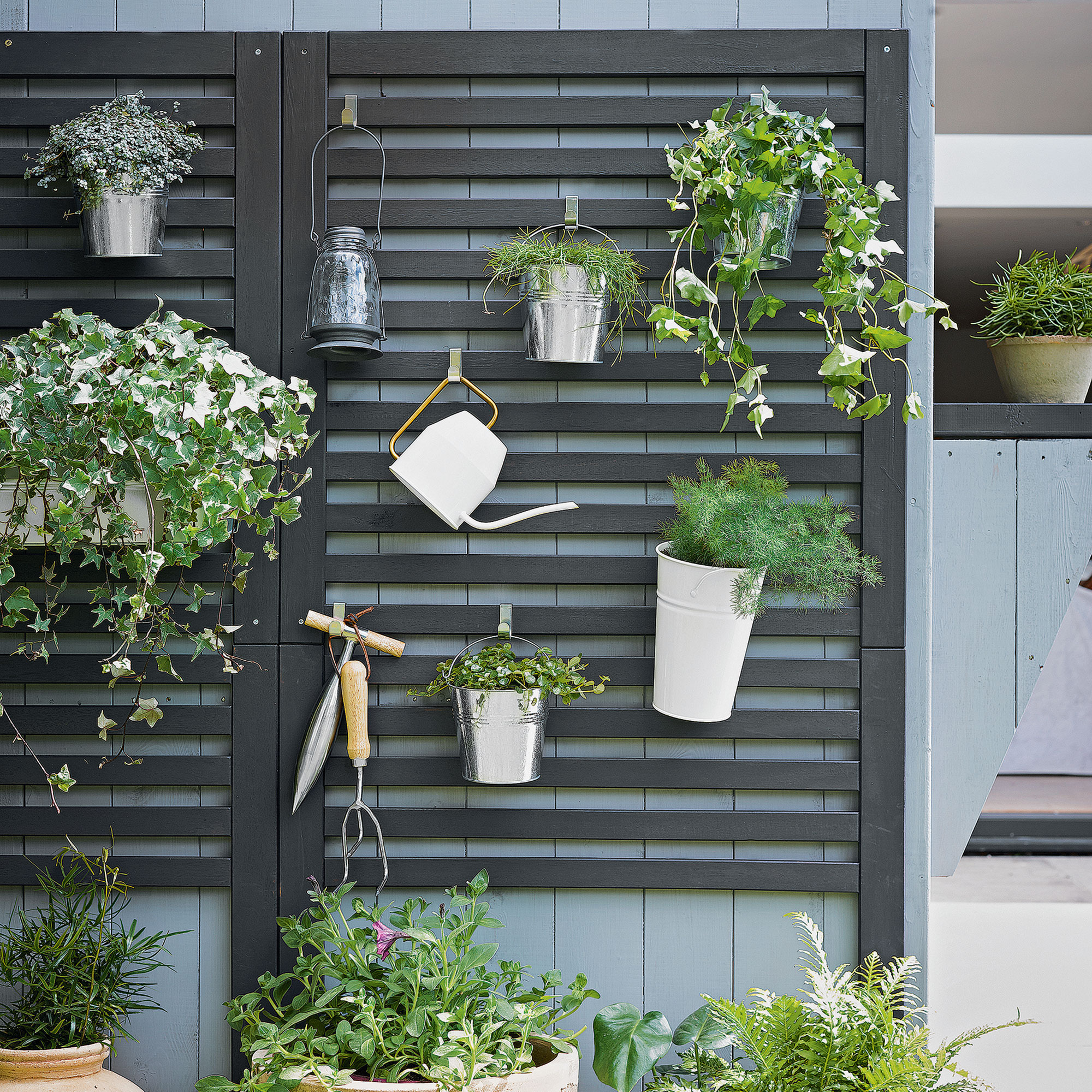
If you've transformed garden fence ideas into garden screen ideas, considering making it multifunctional.
Paint it first – not just for colour and to disguise blemishes, but also to protect it – and then nail in rows of simple slats (you can buy these ready-cut from DIY shops). If they’re not already black, paint them a dark shade; a pale colour will quickly show up dirt.
Attach hooks to hang planters and zinc buckets (drill drainage holes in the bases first). The greenery will really pop against the dark background, creating a statement wall, adding storage and freeing up floor space – so it’s a great idea for balconies and small patio spaces, too.
And it doesn’t just have to display plants! Solar light bulbs, lanterns, an outdoor clock or a galvanised watering would be welcome and useful additions.
16. Erect a pergola to screen from above
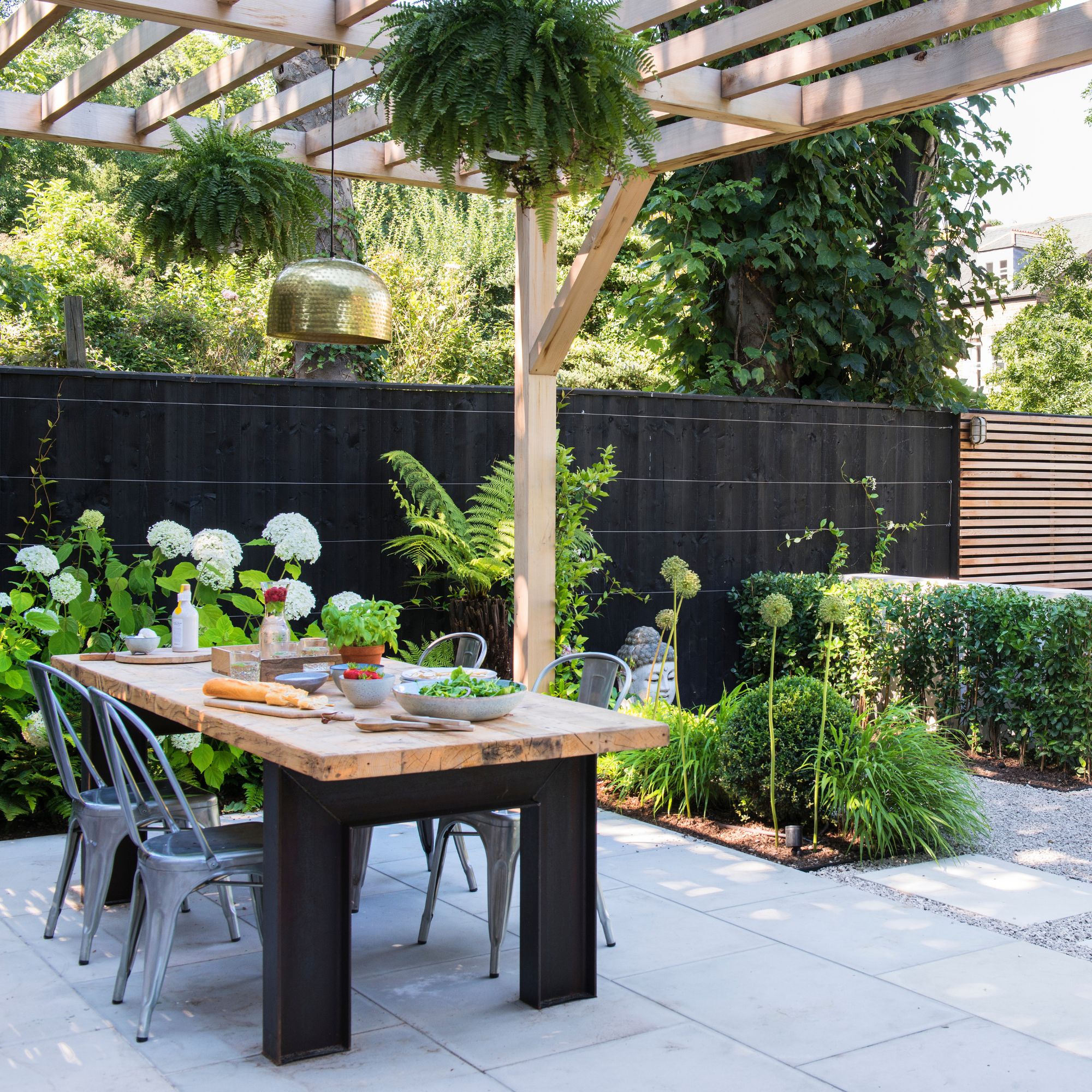
When it comes to garden screening ideas, you can block even the most minuscule gap at eye level, but a neighbour needs only to climb their stairs to enjoy an unimpeded view of your garden.
Help comes in the form of a pergola – a simple but sweet solution to creating a sanctuary that’s screened-off from above, as well as providing a structure for climbing plants and vines to grow up (and over). It has a natural fairy tale quality to it, too, for a romantic feel.
For a more modern look, or until your trailing greenery has grown, swathe the roof of a pergola with multi-coloured bamboo screening or raffia (both available in rolls) or with strings or festoon lights. It’s even possible to install solar panels on top, but check your structure and positioning with a specialist first.
17. Create a quiet enclosure
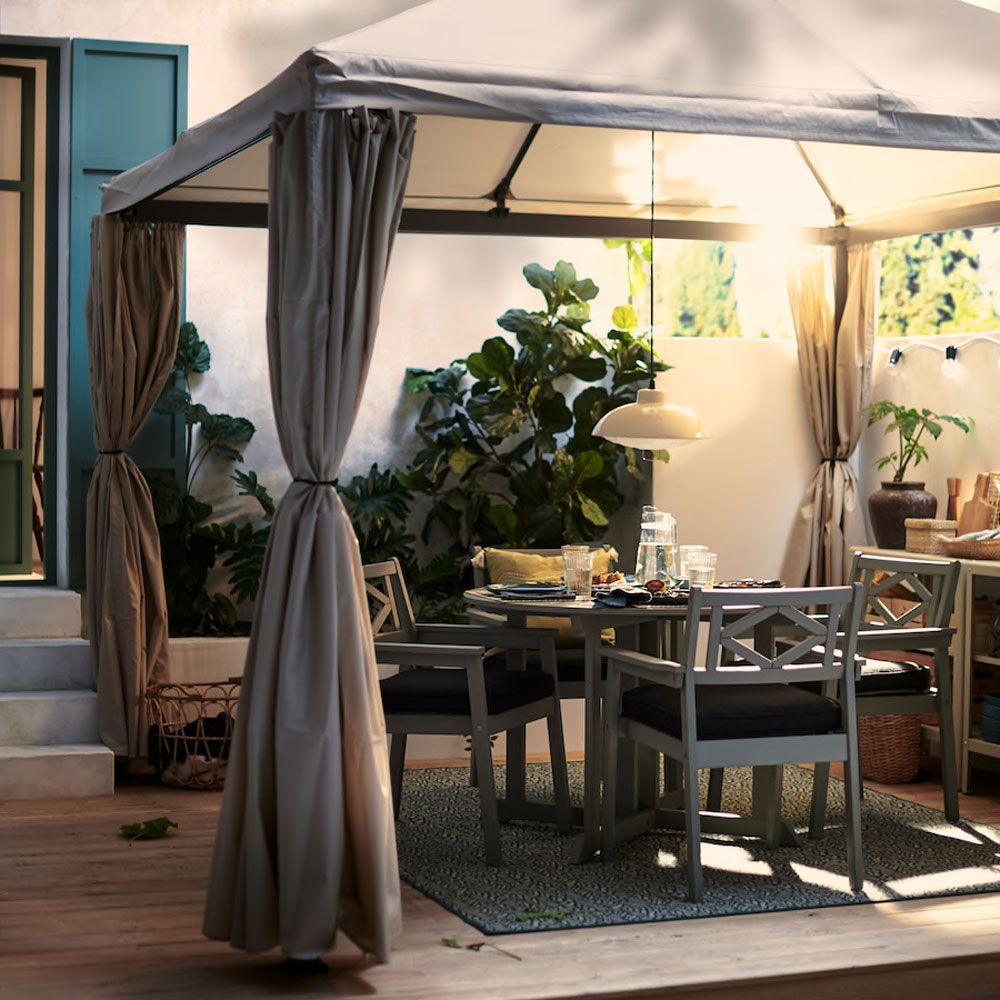
A curtained gazebo may not possess the wow factor of an all-out summerhouse or garden room idea, but it’ll provide similar elements – screening on all sides, warmth and functionality – all without the hefty price tag.
The pitched roof and generous drapes of the HIMMELSÖ gazebo with curtains from IKEA, for example, create a sense of grandeur, making it ideal for turning an alfresco dinner into a celebratory occasion. There's also the added benefit of using the framework to suspend a pendant light or a heater.
Or, draw the curtains, add a rug, beanbags and a projector, and a mini cinema – for little ones and big ones alike – is yours!
Gazebos work well as an office space or shaded reading nook in the corner of a garden, where the curtains on the two sides that sit in the corner can be drawn, and the other two left open, shielding you from the neighbours’ view and voices (the canvas roof and curtains will absorb sound).
18. Hide behind tropical plants
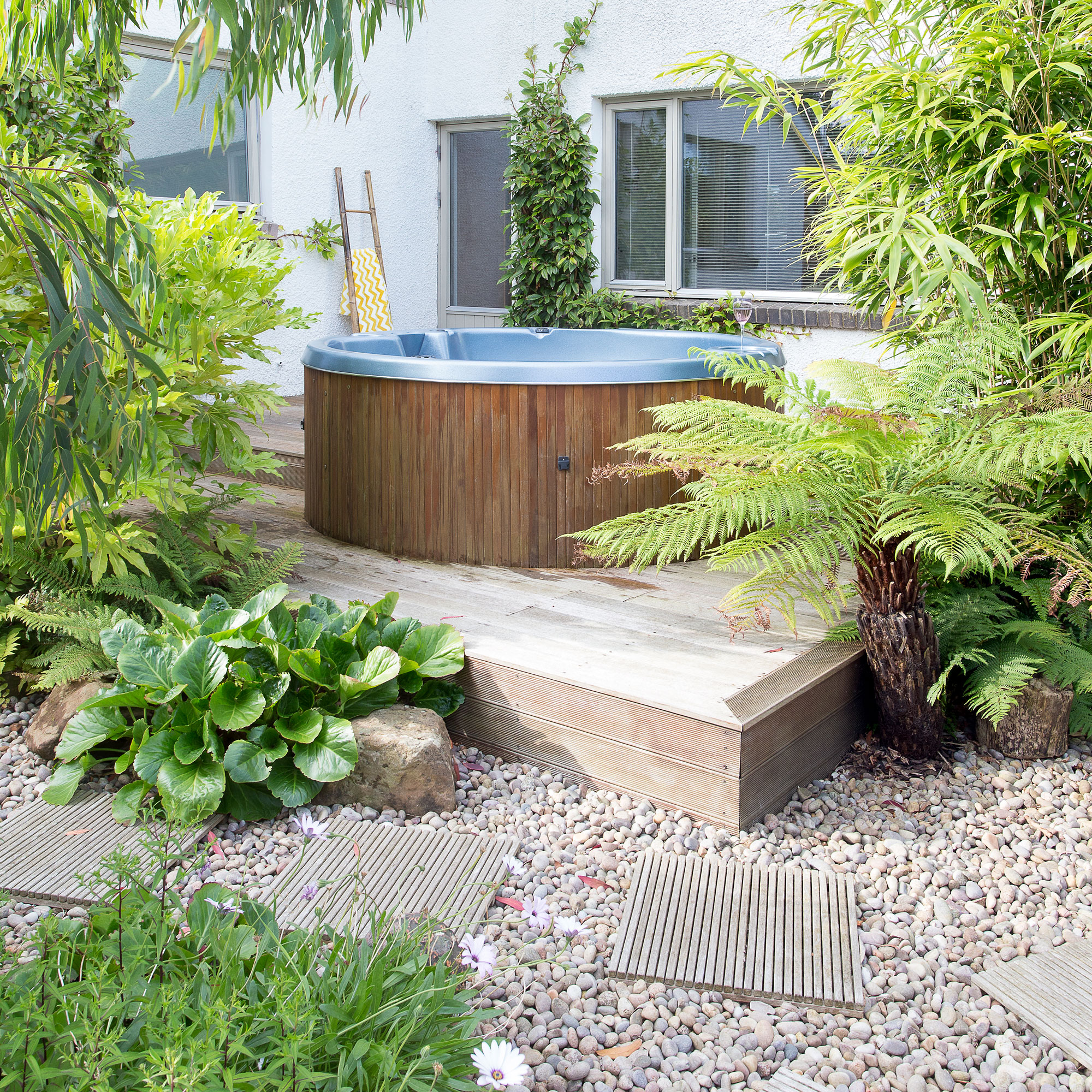
We associate the word tropical with hot and humid climates, but there are many tropical plants that will thrive in a UK climate, growing tall and wide. They're ideal for creating a natural, green screen in your garden.
Opt for hardy plants such as palms and yuccas which are not only lovely to look at, but also quick to grow and easy to care for. Bamboo is notorious for its supersonic growing speed, but as the experts at Gardenesque warn, ‘It can be invasive, so it’s best grown in pots to keep it contained’.
In fact, planting some tropical plants in pots and others directly into the ground will allow you to curb the growth of the rampant ones and encourage growth for the rest. Plus, you’ll be able to move the pots to where they are required the most, such as around a hot tub decking area.
19. Use reeds for speedy screening

Not only is reed screening one of the snappiest solutions to screen your garden, but it’s versatile, widely available and keenly priced.
Lightweight and flexible, it’s a material (along with bamboo and willow) that can be easily be curved around corners or attached to a shabby wall, fence or balcony railings, creating a natural, home-spun look along the way.
Its pliable nature means it can also be used as a canopy over a pergola. Plus, the only maintenance it requires is a good wash every now and then to prevent algae growth.
You can buy reed screening from a number of in-store and online suppliers, like Reed Fencing Screening Rolls from The Range or Peeled Reed Natural Fencing Screening from Primrose.
Be warned if you’re a colour enthusiast, though, as this type of screening can’t be painted, but there’s nothing stopping you from prettying it up with bright bunting or multi-coloured carnival lights.
20. Make the fence the feature

Traditional, no-frills fence panels are adept at blocking views, but they can offend the style-minded. Of course, they can be improved with a lick of paint or disguised behind plants, but a bolder option would be to ditch the traditional route entirely and switch up to a smart, contemporary fence. That way, it can be displayed in all its glory rather than trying to blend into the background.
You want to avoid colours that will naturally blend into a garden, such as green, cream or brown, as well as those which will stand out but look too kitsch or childish, such as pink, red or orange. Go for grey, navy or black instead.
Opt for a strong pattern but keep it smart and symmetrical – so no fancy curves or mixy matchy shapes. Hanging a simple clock, mirror or shelf on it centrally will draw extra attention and turn it into a focal point.
21. Use woven panels to create open zones
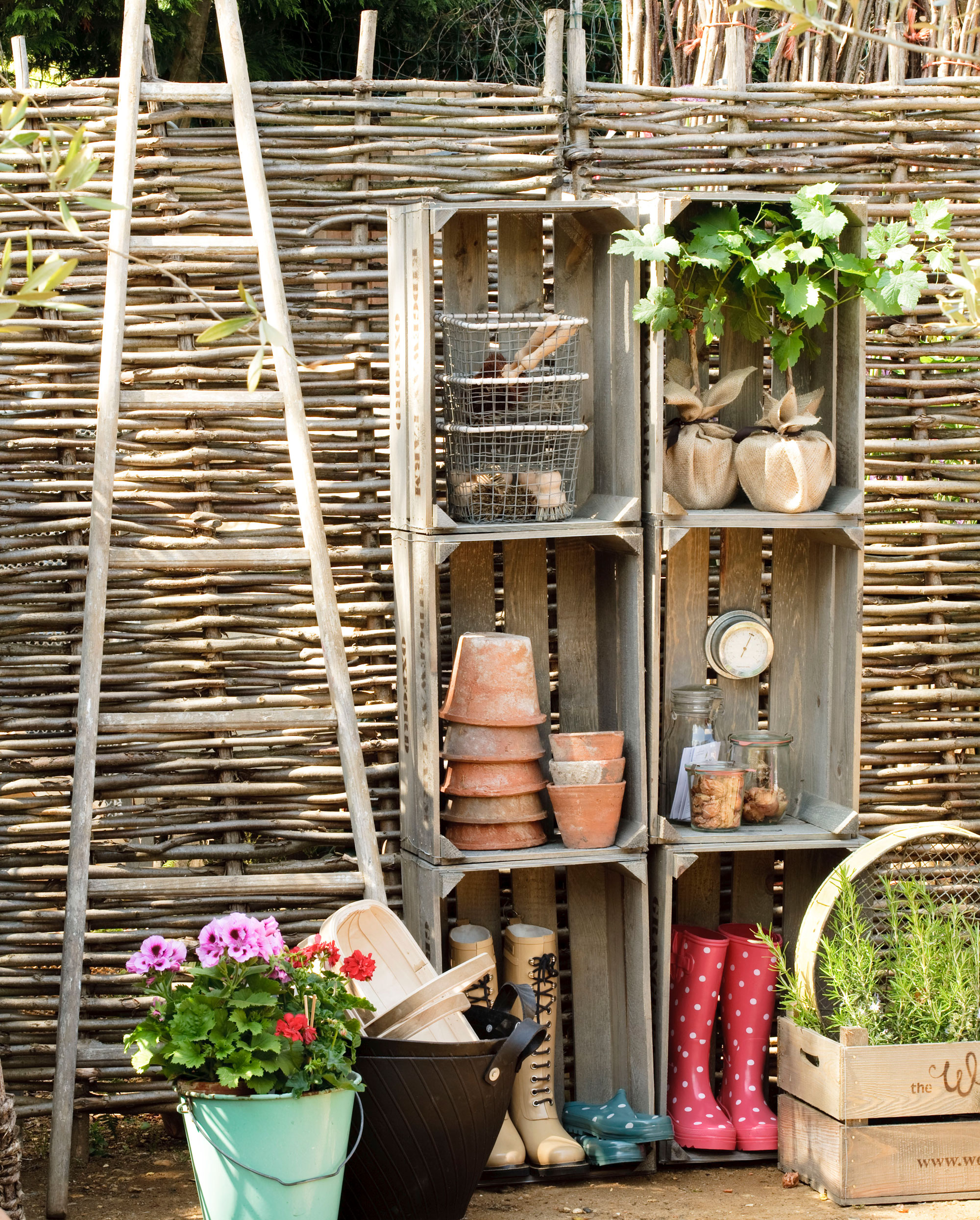
When you want to create zones but feel solid fencing would feel too harsh, choose woven garden screening like these willow panels. The open weave structure provides a more airy approach and avoids breaking the flow of the space. This is especially handy if you're looking for small garden ideas and you're trying to avoid making the space feel limited.
Recycling and repurposing can all come into play when it comes to garden screening ideas, particularly if you’re on a budget. A shabby, existing fence or new but inexpensive screening such as willow, reed or bamboo can up its country-style credentials by teaming it with vintage-style objects that look as good as they are useful.
Apple crates always look lovely, and they can be piled up to create a storage unit, while a pre-loved wooden chair, table or ladder can be a charming way to display potted plants.
FAQs
Which is better, bamboo or willow screening?
If you're deciding between bamboo and willow screening, we can see why: both materials are relatively inexpensive options that can give your space a natural, rustic feel.
Privacy is usually guaranteed with both options, as both bamboo and willow is closely packed together. Willow is more flexible, but it isn't as durable as bamboo.
'Willow might start rotting in particularly wet conditions if not treated and cared for properly, and it's thinner than a lot of bamboo,' explains landscaping expert Gary Jarman from Building Shop. 'However, bamboo is often more expensive than willow.'
Both are great options, but bamboo, while dearer, is more durable than willow if you're looking for long-term garden screening ideas.
What is the cheapest way to screen a garden?
If you're looking for budget garden screening ideas, reed and willow are among the least expensive materials. They're usually available to buy in rolls, and it's relatively straightforward to set them up. They're flexible, too, and a brilliant eco-friendly option.
Summer might seem far away, but it's a great time to consider which garden screening ideas you'll be trying next year – especially if you're going for natural hedging, which can be planted now.

Fiona Galley has been a Freelance Journalist since 2015, contributing to lifestyle titles both on-line and in print. Previously, she was the in-house Lifestyle Editor at Essentials magazine, where she styled shoots, compiled shopping sections and looked after the reader homes pages.
- Holly CockburnContent Editor
- Ellis CochraneContributor
- Sophie KingGardens Editor
- Sophie Warren-SmithContributor
